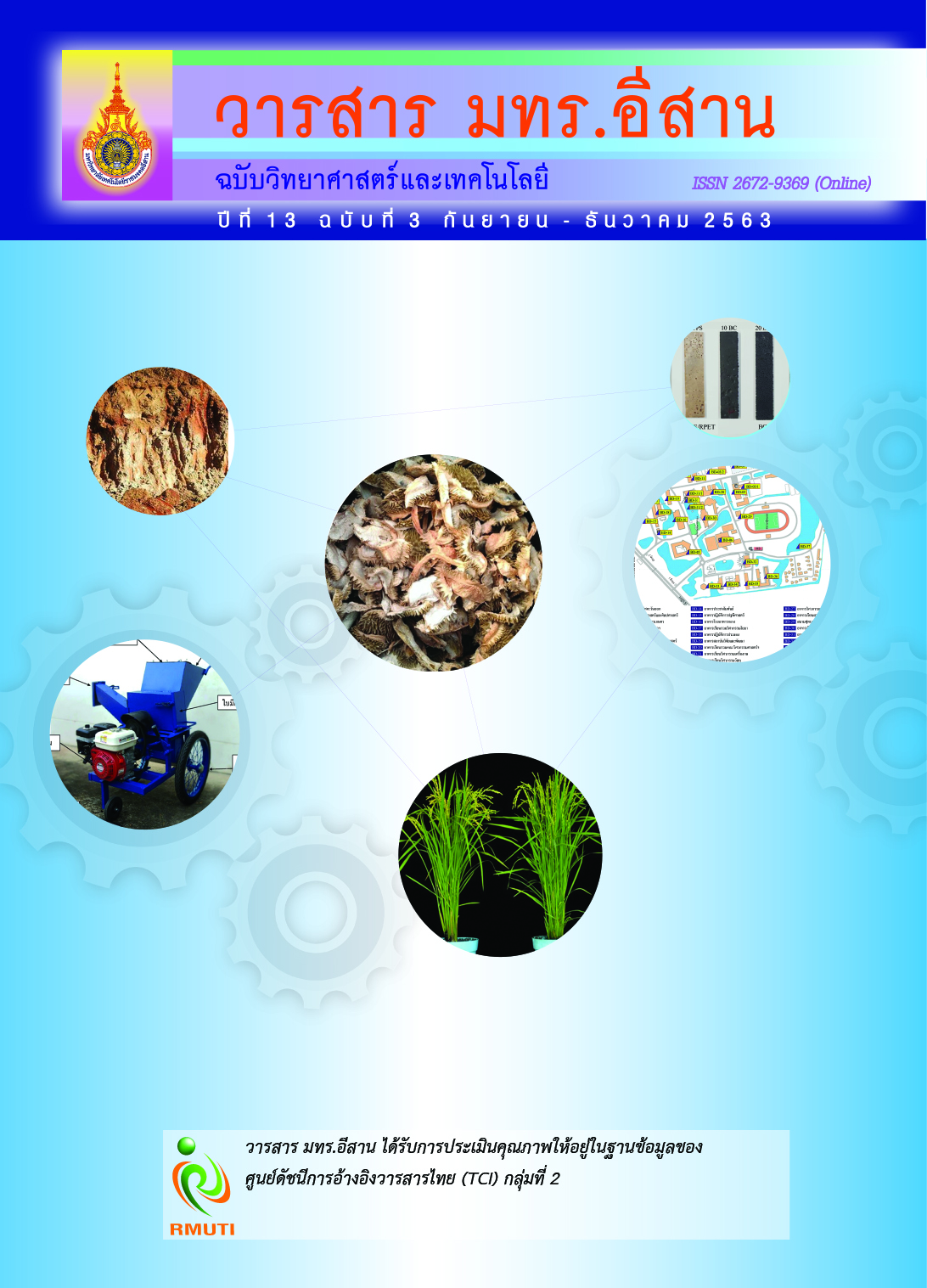Load Clustering Technique Application to PV Solar Rooftop Installation Planning for Improving Energy Efficiency Index
Main Article Content
Abstract
This research paper presents to load clustering technique application to PV Solar rooftop installation planning at the center of Rajamangala University of Technology Isan. By considering the building load profile that has high continuous power consumption during the day which can improve the load factor which is the energy efficiency index to be higher. We collect the daily load profile of the 34 target buildings from the digital power meter and analyze of the load clustering by K-Means Clustering technic using the SPSS program. The results showed that load clustering can be divided into 3 groups. The first group, all buildings have low power consumption but high deviations of the load profile, low load factor level. The second group, Medium power consumption and minimize deviations of the load profile, high load factor. The third group, High power consumption, especially during the daytime, low load factor level. Therefore, Group 3 consist of 19 buildings has appropriate and setup to the plan for installation of PV solar rooftop. This will reduce the peak load demand from the Provincial Electricity Authority’s system, can improve the energy efficiency index.
Article Details
References
Moslener, U., McCrone, A., d’Estais, F., Grüning, C., Louw, A., Boyle, R., Strahan, D., Collins, B., and Stopforth, K. (2017). Global Trends in Renewable Energy Investment 2017. Global Trends Report 2017, Frankfurt School of Finance and Management. DOI: 10.13140/RG.2.2.19153.84320
REN21. (2017). Renewable 2017 Global Status Report. Access (26 December 2019). Available (http://www.ren21.net/status-of-renewables/global-status-report)
Potisat, T. (2016). Project Development Programmer South-East Asia (GIZ Thailand) Solar PV Business Models for the Public Sector. In Proceeding of the 2nd Thai-German Community-based Renewable Energy Conference. October 18, 2016. Century Park Hotel, Bangkok
Kruangam, D. (2013). Solar PV Rooftop-Energy Production Business that you or Anyone can Own. Inno Mag. Vol. 40, No. 231, pp. 7-10 (in Thai)
Department of Alternative Energy Development and Efficiency Ministry of Energy. (2014). Solar PV 358 Rooftop Safety. December, 2014. (in Thai)
Karun, T. and Pisut, R. (2015). A Novel Clustering Methods (Two-stage Fuzzy-Possibislity C-Means) for Load Profile Clustering. Kasetsart Engineering Journal. Vol. 28, No. 91, pp. 23-30. (in Thai)
Damayanti, R., Abdullah, A. G., Purnama, W., and Nandiyanto, A. B. D. (2017). Electrical Load Profile Analysis Using Clustering Techniques. Materials Science and Engineering. Vol. 180, Issue 1, pp. 1-7. DOI: 10.1088/1757-899X/180/1/012081
Rupali, M., Deorankar, A. V., and Chatur, P. N. (2012). Load Pattern Analysis of Electricity Customers based on Clustering Algorithm. International Journal of Computer Science and Technology. Vol. 3, No. 4, pp. 702-705
Ali Al, W., Jianzhong, W., and Nick, J. (2017). K-means Based Load Estimation of Domestic Smart Meter Measurements. Applied Energy. Vol. 194, pp. 333-342. DOI: 10.1016/j.apenergy.2016.06.046


